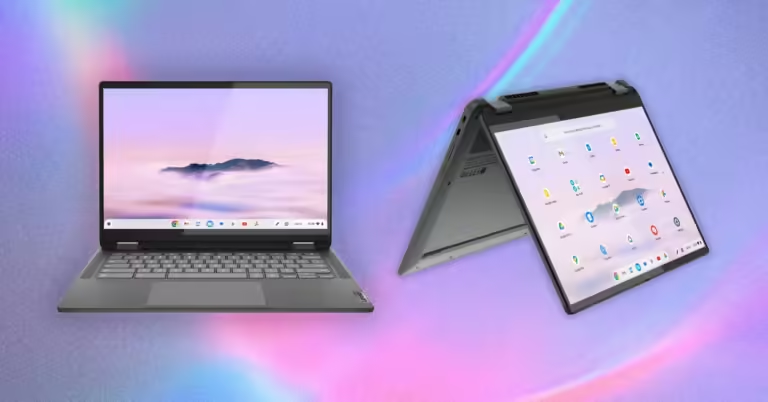Chromebooks come with a wide variety of hardware, so it can be hard to know exactly what you need. Luckily, the Chromebook Plus program makes parsing through the jumble of specs a little easier. And because ChromeOS is lightweight, you don’t need super powerful specs to get a great experience. Here are some general tips on what to look out for:
Processor: For the best experience, you should avoid older Chromebooks with Intel Celeron processors. The Chromebook Plus specs provide a good baseline to ensure fast performance, so we recommend at least an Intel Core i3, Core i5, or AMD Ryzen 3 7000 processor. Be careful not to spend too much on an Intel Core i7 processor configuration unless you need the extra horsepower to multitask Android games, Linux apps, and dozens of Chrome tabs. While Intel and AMD dominate the processor scene, you will occasionally see Chromebooks using ARM processors, like the Qualcomm Snapdragon 7c Gen 2 in the Lenovo Chromebook Duet 3 mentioned above. These are fine for very basic tasks, but don’t perform as well under sustained, intense loads (at least until new ones come out).
Ram: If you’re on a budget, always opt for at least 8GB of RAM. You won’t find 4GB of RAM on anything other than a basic, ultra-cheap Chromebook, but it will severely limit your ability to multitask. If you want to avoid slowdowns, aim for 8GB of RAM as standard.
Storage: Unlike a Mac or Windows PC, much of your work on a Chromebook is done on the web, which means you can usually get away with less storage, but we wouldn’t recommend going below 128GB. If you’ve got the budget, you’ll be much happier with at least 256GB. NVMe solid-state drives will give you the best speeds, so keep an eye on that in the specs when comparing models.
screen: The majority of Chromebook displays are IPS LCD panels, and that’s fine. Until OLED displays penetrate the Chromebook market, IPS LCD screens offer the best contrast and color accuracy. If you’re on a budget, beware of TN LCD panels, as they are generally lower quality and have poor viewing angles. In terms of resolution, a resolution of 1,920 x 1,080 pixels is standard. 13-inch and 14-inch screen sizes offer a sharp picture, and 15-inch is fine too. Higher resolutions look better, but keep in mind that putting power into more pixels will reduce battery life.
port: USB-C ports are becoming standard on modern Chromebooks, so there’s no longer an excuse to buy a Chromebook without one. Get one that charges via USB-C so you can charge it with a portable power bank when you’re on the go. A microSD card slot is also handy if you want to quickly and easily expand your storage. Some Chromebooks also support Thunderbolt 4 via the USB-C port. This is a great option if you plan on connecting your Chromebook to a high-end monitor, but most people won’t need it. You can get similar external monitor support (for a lot less money) with USB-C support via an HDMI port or DisplayPort instead.

